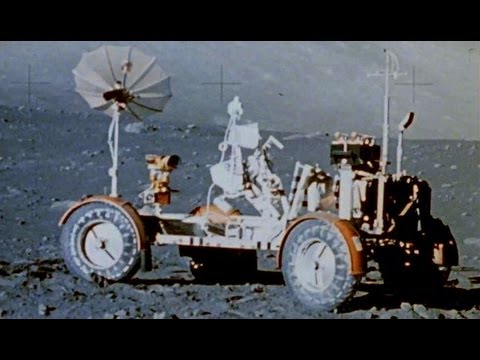How China’s First Mission to Mars Could Be a Gamechanger
No other planet has captivated our imaginationsquite like Mars. While inhospitable now, billionsof years ago, the landscape of this dustyrock was similar to that of Earth, but somewherealong the way, it became a red wasteland. And scientists don’t exactly know how. Withcountless possibilities, it’s no wonderthat countries around the world are sendingmissions to Mars to uncover what secrets theplanet may hold. And one of the most ambitiousmissions yet is China’s Tianwen-1. This will be the country’s debut Mars explorationventure and they’re going big: Tianwen-1,translating to “questions to heaven”,consists of an orbiter, lander, and rover. And this is one of the reasons why this projectis so ambitious, because executing all threemission components on a first-attempt is afeat not achieved by any country before. Because,well, it’s hard. Getting to Mars is a several-month endeavourand once you get there, the planet doesn’texactly send a warm welcome. NASA has dubbedthe descent to Mars as the “7 minutes ofTerror” because the Martian atmosphere createsheat to any craft that has its sights setto land. Only a few missions that have landedon the surface of Mars have been successfuland the majority of them have been from NASA. This may sound like a daunting undertakingfor China, but judging by their track recordin the last few years, they’ve been rathervictorious with other projects. In 2013, Chinajoined the exclusive league of countries thathave been able to land on the moon and in2019, they were able to land on the far sideof the moon with their rover Chang’e 4,which no one else has done. So, this Tianwen-1mission is full of anticipation. But as much as we want to get into the nitty-grittydetails of this mission, China’s teams arekeeping that information to themselves. However,this is what we know so far. According toa recent paper about the payloads publishedJuly 2020, the Tianwen-1 mission will be packedwith 13 scientific instruments, split betweenthe orbiter and rover. China’s goal is to provide a comprehensivesurvey of the planet’s atmosphere, geologicalstructures, and surface environment. Whichincludes the ever-exciting search for waterand other signs of life. So let’s startwith Tianwen-1’s orbiter. This spacecraft will not only be used as thevessel for the lander and rover, but it willalso be responsible for capturing images andanalysing the surface of Mars. It’s equippedwith a medium-resolution camera, subsurfaceradar, mineralogy spectrometer, neutral andenergetic particle analyzers and a magnetometer. There’s also a high-resolution camera onboard that is comparable to HiRise, a cameraon NASA’s Mars Reconnaissance orbiter that’shelped scientists study objects about a meterin size on the planet’s surface in unprecedenteddetail. Overall, the orbiter will use theseinstruments to study morphology, geologicalstructure, soil characteristics, water-icedistribution, material composition, the ionosphere,and finally Mars’ magnetic field. This littlecraft is busy. But it won’t be alone in its exploration. Once the orbiter reaches Mars, it will releasethe lander and rover system. Like we’vementioned, the lander needs protection andstabilization from the heat generated fromdescent. So we don’t have all the detailsyet, but from what we’ve seen in past Marsmissions, the lander will need to deceleratefrom its release in the Martian atmosphereto a safe landing on the surface. And theexciting part is when the lander touches theground, it will release a 240 kilogram, solar-poweredrover. The possible landing sites for the rover aretwo areas north of the equator on the plainsof Utopia Planitia. The two areas are low-lyingregions which reportedly are easier for firsttime Mars explorers to land on, and eitherone provides a good source of deposits tounderstand the red planet’s evolution. Whichis great news for the rover’s ground-penetratingradar, since it will be one of the first ofits kind used on Martian soil. It’ll reveal the local geology, ice, andsediment distribution. Along with the radar,the rover is packed with Multispectral Camera,Terrain Camera, Mars Surface Composition Detector,Mars Magnetic Field Detector, and Mars MeteorologyMonitor. All the information gathered willbe sent back to the hard-working orbiter whichwill be used as a communications relay forthe team back on Earth. So there we have it. And this is just thefirst part of China’s long-term plan tobring back samples from Mars by 2030. Youdon’t want to miss another possible worldbreaking feat from this space agency, so lookoutfor China’s Long March 5 rocket expected tolaunch at the end of July 2020, probably carryingthe most ambitious Mars mission yet. Want to know more about Mars exploration missions?Check out our Countdown to Launch playlisthere and make sure to subscribe for all yourrocket launch news. If there are other missionsyou’d like us to cover, let us know downin the comments below. Thanks for watching and I’llsee you next time on Seeker.













